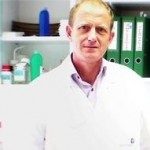Rabies is still responsible for approximately 60,000 deaths in humans each year. The bat-borne virus EBL1a, related to rabies, rarely affects humans, but a case was recently reported in mainland France. The virus was identified thanks to a collaborative effort between the Institut Pasteur and the Limoges, Pitié-Salpêtrière and Necker-Enfants Malades (Paris Public Hospital Network – AP-HP) university hospitals.
In August 2019, a 59-year-old man died in Limoges university hospital from encephalitis (acute brain inflammation) of unknown origin. Collaboration between Limoges university hospital and the Paris-based university hospitals Pitié-Salpêtrière and Necker-Enfants Malades, together with the Institut Pasteur, enabled the cause of death to be identified.
Cause of death identified using a specific technique
The scientists used a pathogen identification technique which involved sequencing the nucleic acids in a sample and performing computer analysis. The technique is routinely used by the Institut Pasteur’s Pathogen Discovery laboratory in collaboration with the Microbiology laboratory at Necker-Enfants Malades Hospital in Paris. A bat-borne virus known as EBL1a (EBL for European bat lyssavirus), closely related to the rabies virus, was identified in the patient’s brain, then confirmed using complementary techniques at the Institut Pasteur’s National Reference Center (CNR) for Rabies.
The importance of monitoring bat bites
This is the first time that a case has been identified in humans in Western Europe. The virus occurs frequently in insectivorous bats such as serotine bats. The only previous human case was identified 35 years ago in Russia. The man may have been infected after handling a bat in the colony in his loft. This case supports the recommendation not to touch bats on the ground, and if bitten to go immediately to an anti-rabies center, where treatment can be given and is effective if administered early.
In virological terms, the case demonstrates the efficacy of deep sequencing techniques in identifying pathogens.
Source :
First case of lethal encephalitis in Western Europe due to European bat lyssavirus type 1, clinical infectious diseases, 15 mai 2020
Béatrice Regnault1,2, Bruno Evrard3,4, Isabelle Plu5,6, Laurent Dacheux7, Eric Troadec1,2 , Pascal Cozette7, Delphine Chrétien1,2, Mathilde Duchesne8, Jean-Michel Vallat9, Anne Jamet10, Marianne Leruez10, Philippe Pérot1,2, Hervé Bourhy7, Marc Eloit1,2,11*, Danielle Seilhean5,7*
1 Pathogen Discovery Laboratory, Institut Pasteur, Paris, France
2 The OIE Collaborating Center for the detection and identification in humans of emerging animal pathogens, Institut Pasteur, Paris, France)
3 Medical-Surgical Intensive Care Unit, Dupuytren University Hospital, Limoges, France
4 Inserm CIC 1435 and UMR 1092, Dupuytren Teaching Hospital, Limoges, France
5 Sorbonne Université, Brain Institute (ICM; INSERM, UMRS 1127; CNRS, UMR 7225), Paris, France
6 Département de Neuropathologie Raymond Escourolle, AP-HP-Sorbonne, Groupe Hospitalier Pitié-Salpêtrière, Paris, France
7 Lyssavirus Epidemiology and Neuropathology Unit, National Reference Centre for Rabies, WHO Collaborative Centre for Reference and Research on Rabies, Institut Pasteur, Paris, France.
8 Pathology Department, Dupuytren University Hospital, Limoges, France
9 Neurology Department, Dupuytren University Hospital, Limoges, France
10 Department of Clinical Microbiology, Necker Enfants-Malades Hospital, AP-HP, Centre Université de Paris, Paris, France
11 Ecole Nationale Vétérinaire d’Alfort, Maisons-Alfort, France
*Danielle Seilhan and Marc Eloit are co-senior authors






